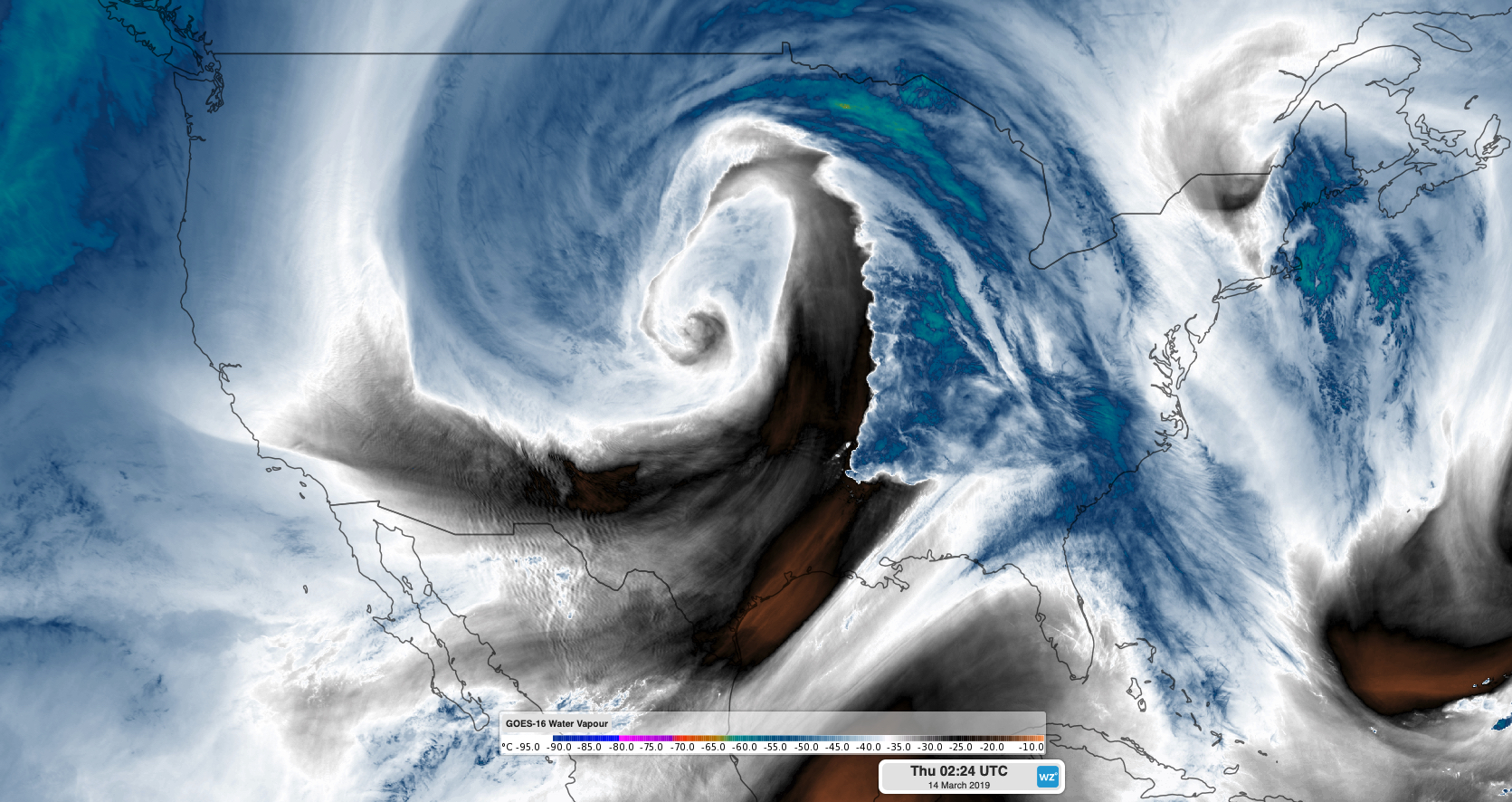Bombogenesis breaks pressure records in central U.S. states

A remarkably deep low pressure system passed over the central United States of America this week, causing a volatile mix of weather across the Great Plains.
While this part of the world is no stranger to severe weather, it's unusual for a 'bomb cyclone' to be the cause.
The recently popularised term 'bomb cyclone' refers to a low pressure system that deepens rapidly enough for its central pressure to drop by at least 24 hectopascals in 24 hours. This process is called bombogenesis.
The system currently traversing the U.S. easily fits this definition. It's central pressure dropped by a whopping 25 hectopascals in just 12 hours on Wednesday.

Image: Enhanced water vapour satellite image showing a low pressure system passing over the central U.S. this week.
Bombogenesis is not an uncommon phenomenon, although it usually happens when cut-off low pressure systems in the mid latitudes move from land over the ocean. This is one of the main ways East Coast Lows develop in Australia.
It's far less common to see a low pressure system undergo bombogenesis over a landlocked area like the U.S. Great Plains.
The rarity of this system was reflected by some of the surface pressure observations that occurred near the centre of the low. Weather stations in Kansas, Colorado and New Mexico set new preliminary low air pressure records on Wednesday. Some of these stations have records back to the 1890's. America's National Weather Service is investigating whether a pressure reading of 970.4 hPa on Wednesday at Lamar, Colorado was a new state record.
This week's 'bomb cyclone' also caused powerful winds, heavy snow, blizzards and flooding across parts of the central U.S. Some of the standout observations were wind gusts in excess of 160km/h in New Mexico and Texas and 1.14 metres of snow in Colorado.